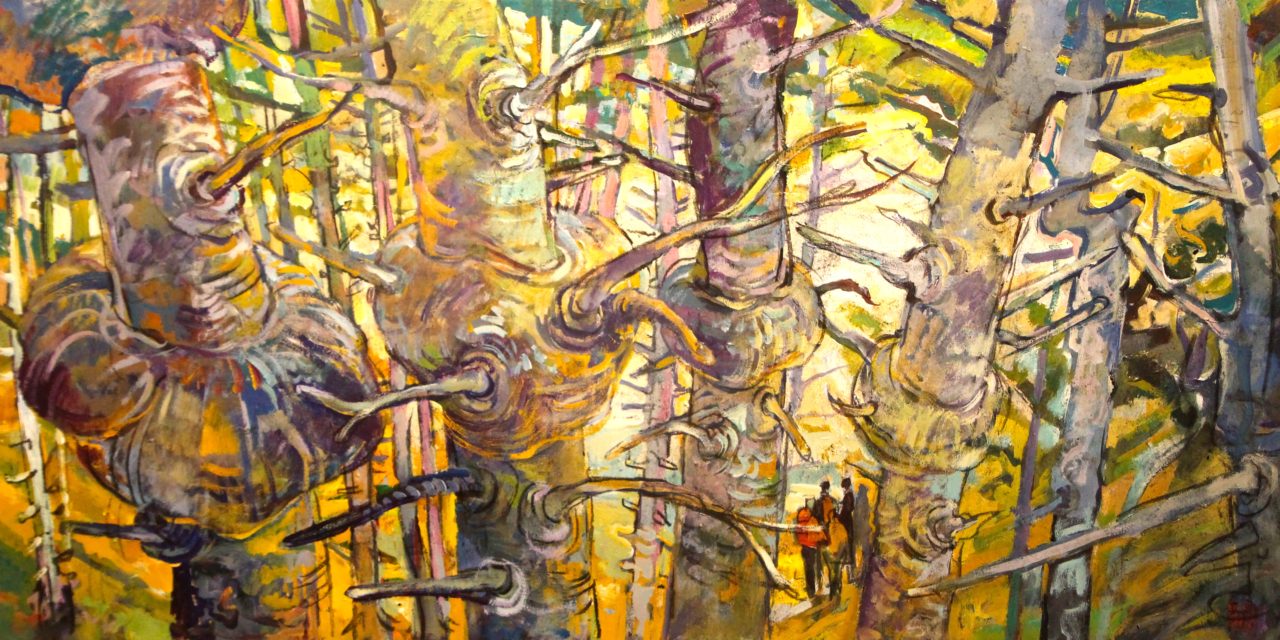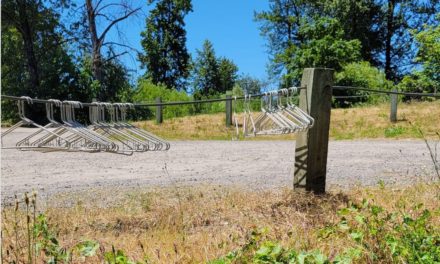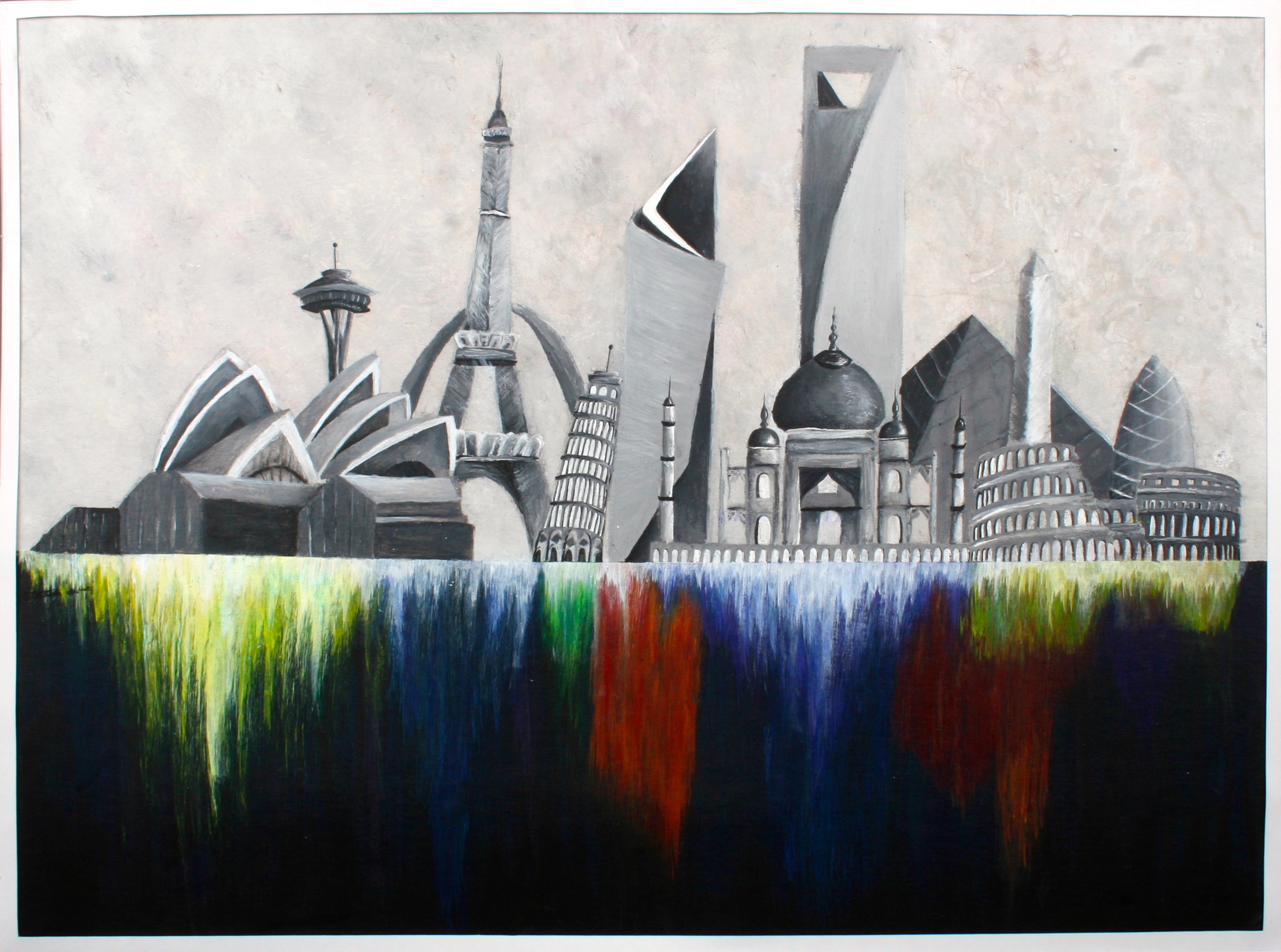(Above: A walk through the woods in the Pacific Northwest is characteristic of artist Erik Sandgren’s work)
By Randi Bjornstad
The paintings in “Land and Sea,” a one-person show on display now at the Karin Clarke Gallery, are sure to seem familiar to anyone who lives in Oregon’s northwestern quadrant, and probably make those who don’t wish they did.
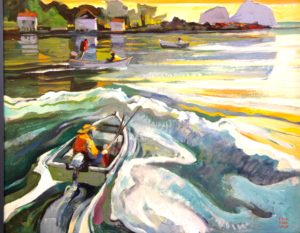
Erik Sandgren’s painting of a boater in a coastal harbor is part of the show at the Karin Clarke Gallery
Portland artist Erik Sandgren has brought more than 40 of his lush landscapes and seascapes to the downtown Eugene gallery, and owner Karin Clarke says the show almost amounts to a family reunion for members of the Clarke and Sandgren families.
“My family and his family go back a long time,” Clarke said recently, as Sandgren and his wife, Kathryn Cotnoir — also an artist — carried paintings into the gallery to be hung.
Her father, Mark Clarke, took classes with Sandgren’s artist father, Nelson Sandgren, “when my dad was right out of high school, and they formed what became a lifelong friendship,” Clarke said. “Nelson encouraged my dad as a painter, and he urged him to go to the University of Oregon to study with David McCosh.”
Later, her father babysat for the Sandgrens, taking care of Erik and his sister, Jan, “and when my parents had children, they in turn babysat for my brother and me,” Clarke said with a laugh.
Erik Sandgren followed in his well-known father’s footsteps, but he also developed his own distinctive approach to painting as well, serving for many years as the “one-person art department” at Grays Harbor College in Aberdeen, Wash., she said. He returned to live in Portland following his recent retirement.
“We’ve talked for years about curating a show of his work, and last fall I went up and spent a day and looked at everything and selected some of my favorites for this show,” Clarke said. “I wanted to celebrate his retirement and his ‘rebecoming’ an Oregonian.”
The “Land and Sea” show is a compendium of Erik Sandgren’s work, including pieces large and small, mostly rendered in acrylics or watercolors, all representing Pacific Northwest imagery.
For his part, Sandgren remembers drawing and painting from early childhood, “not with a lot of compliments but always with encouragement,” he said. “When I was in college at Yale, I found that I had a ‘leg up’ in art in a department filled with wonderful people, so despite my original interest in science and marine biology, I gravitated toward the art department.”
It was during graduate school at Cornell that Sandgren met fellow artist Cotnoir. She also is known for lushly colored landscapes, and her work appeared several years ago as part of a group show at the Karin Clarke Gallery.
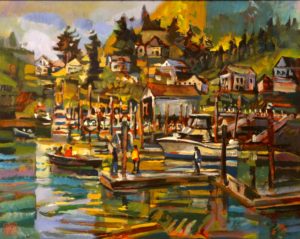
Sandgren has an eye for the allure of boat docks in small coastal cities
Both also enjoy plein air painting, but the constantly changing light and movement of painting on the spot in nature “means there’s no guarantee of getting a good painting,” Sandgren said. “So I have a lot of paintings that started out as plein air that I later develop further in the studio.”
In retirement, he still teaches art workshops and has continued leading the Sandgren Annual Coast PaintOut, which will have its 40th yearly session this year, from July 9 to 21.
“My father started it as a watercolor class when he was teaching at Oregon State University,” Sandgren said. “He bequeathed the workshop to me — part of it is a class, and the rest of the time is 12 days of painting on the central Oregon Coast. Usually, about 80 to 100 people come at some point during the two weeks.”
Some people pay a fee for the official workshop, and others just come to paint nearby and share their work informally at the end of the day. Information about the workshop is online at eriksandgren.com/events/workshops
Land and Sea — Paintings by Erik Sandgren
When: Through April 28
Where: Karin Clarke Gallery, 760 Willamette St., Eugene
Hours: Noon to 5:30 p.m. Wednesday through Saturday, or by appointment
Information: 541-684-7963 or karinclarkegallery.com
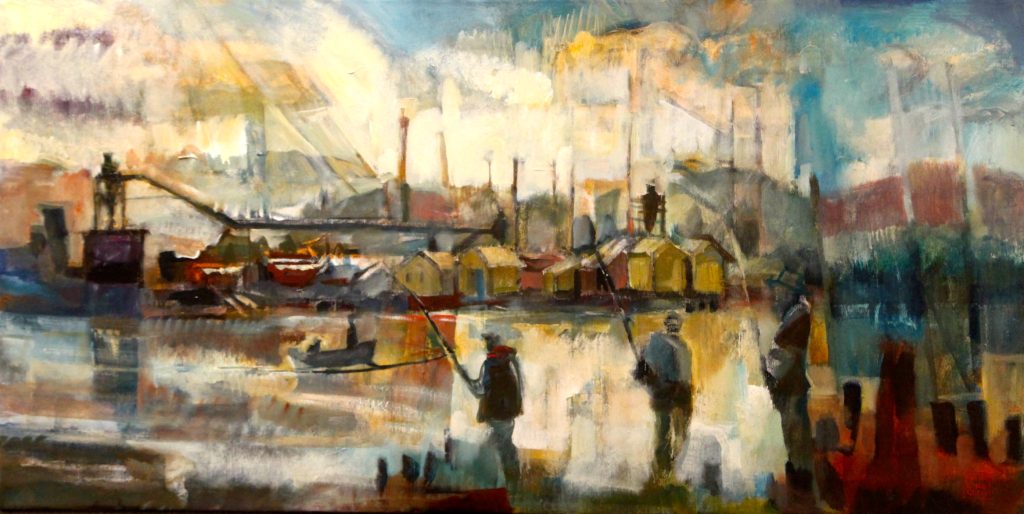
Sandgren’s work often depicts the history of the Oregon coast’s early timber towns. “All the old money in the Northwest that supported art in the state early on was timber money,” he said.

